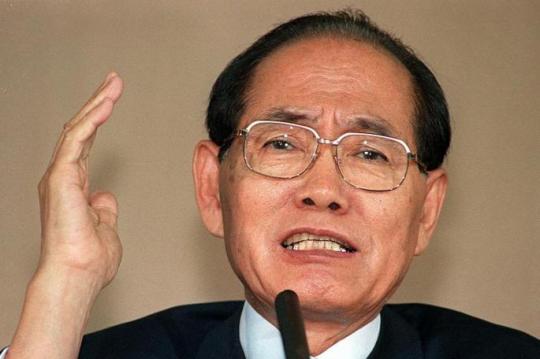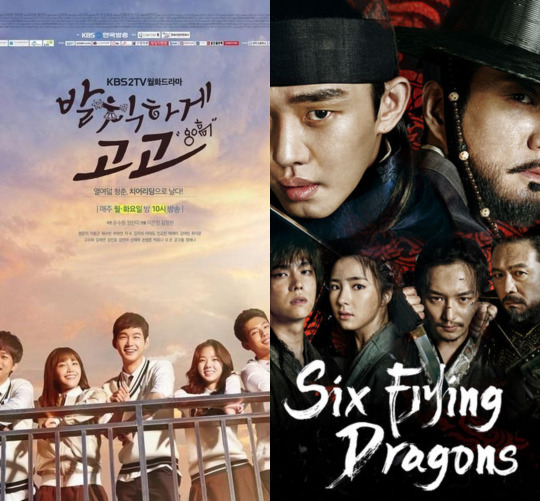#medical malpractice in thailand
Explore tagged Tumblr posts
Text
Medical Malpractice in Thailand
Thailand boasts a world-renowned healthcare system, attracting medical tourists and residents seeking quality care at affordable costs. However, even in the best systems, things can go wrong. If you experience a negative outcome due to potential medical negligence, understanding medical malpractice in Thailand can be crucial.
What is Medical Malpractice in Thailand?
Thai law doesn't have a specific "medical malpractice" statute. Instead, cases are based on the concept of a "wrongful act" as defined in the Thai Civil and Commercial Code (Section 420). This means a healthcare professional can be held liable if their actions (or inactions) deviate from the expected standard of care in a similar situation, causing harm to the patient.
Key Elements of a Medical Malpractice Claim
To pursue a medical malpractice claim in Thailand, you'll need to establish the following:
Duty of Care: The healthcare professional owed you a duty to provide a certain standard of care based on their expertise and the situation.
Breach of Duty: The professional deviated from this standard of care through actions or omissions.
Causation: This breach of duty directly caused you harm or injury.
Damages: You suffered quantifiable losses due to the harm caused.
Challenges of Medical Malpractice Cases in Thailand
Burden of Proof: The burden of proof lies with the patient to demonstrate all the elements mentioned above. This can be challenging, especially obtaining medical records and expert opinions.
Damages Awarded: Unlike some Western countries, Thai courts typically focus on awarding compensation for actual financial losses like medical bills and lost income. Non-economic damages like pain and suffering are rarely awarded and, if so, the amounts tend to be much lower.
Alternative Dispute Resolution
Thailand encourages alternative dispute resolution (ADR) before resorting to court. Options include mediation and arbitration, which can be faster and less expensive than litigation.
Seeking Legal Help
If you believe you may have a case for medical malpractice, consulting a lawyer experienced in Thai medical law is crucial. They can guide you through the legal process, assess the merits of your case, and advise you on the best course of action.
Remember:
Time limits apply for filing medical malpractice claims. Typically, you have one year from the time you discover the harm and the identity of the liable party to file a claim.
Medical records are crucial evidence. Ensure you obtain and keep copies of all your medical records related to the treatment in question.
Conclusion
While medical malpractice is a complex issue, understanding the legal framework in Thailand can empower you to seek recourse if you experience a negative outcome due to potential negligence. By gathering necessary evidence, seeking legal counsel, and exploring alternative dispute resolution options, you can navigate a challenging situation with a clearer path towards a potential resolution.
#medical malpractice in thailand#lawyers in thailand#criminal law in thailand#thailand#medical malpractices
0 notes
Text
Dental Tourism Market Impact Analysis, Regional Outlook, Application Potential, Price Trends, Forecast, 2022 – 2032
The global dental tourism market is primarily driven by increasing cases of dental defects and an increasing preference for cosmetic dentistry worldwide. Lower treatment price and better service in dental treatment abroad, long waiting times at home for dental treatment can stimulate the growth of the market in the near future. Dentist malpractice is likely to hold back the market during the forecast period.
The global dental tourism market is expected to reach a valuation of US$ 6.7 bn in 2022, with sales growth of a 13.6% CAGR during the forecast period. Rapid adoption of technologically advanced medical devices in emerging economies will drive the growth in the market, with the market size reaching € 24.3 bn by 2032.
Rising costs of health care and dental services in developed countries are forcing consumers to adopt dental tourism. This trend is driven by the lack of insurance coverage for major elective dental surgery procedures in several countries.
Drivers and Challenges have an Impact on Market Dynamics, which can Impact Businesses. Find more Insights in a Sample Report! https://www.futuremarketinsights.com/reports/sample/rep-gb-14623
In addition, treatment costs in countries such as India, Thailand and China are relatively lower than in the countries of North America and Europe. This reflects an increase in dental tourism from Europe and North America to emerging economies. Obtaining a medical visa for such procedures is comparatively faster and easier, thereby facilitating the flow of patients abroad for treatment.
Promotional strategies such as the launch of online campaigns showcasing cost-effective services from healthcare facilities are contributing to the growth of the market. Providing undivided attention to healthcare and providing affordable accommodation sparks consumer interest in adopting attractive medical-tourism packages, identifying both treatment and recreational choices.
With increasing lifestyle-related diseases and unhealthy dietary intake, the incidence of dental disease is increasing. High prevalence of diseases such as dental caries has led to a spike in dental restoration procedures. Thus, the increasing burden of dental abnormalities is propelling the interest in cosmetic dentistry, creating growth opportunities in the market.
“Increasing adoption of technologically advanced medical devices in emerging economies, along with increasing government-backed investment in the The development of healthcare infrastructure in these countries is expected to drive the market in the coming years,” said an FMI analyst.
0 notes
Text

Attorney David Bovino career began as an internship serving as a law clerk to the Chief Justice of the Supreme Court of Thailand. Mr. Bovino has been recognized as a Colorado “Rising Stars” 2013-2018. In March 2012, Aspen attorney David Bovino secured the highest-awarded medical malpractice lawsuit in the history of Santa Clara County, California at $22 million.
0 notes
Text
Part 3!
It's time for my favorie dilf, Indah Monanandara!! I'll go straight ahead to his backstory.
TRIGGER WARNING FOR MENTIONS OF SEXUAL ASSAULT
The first half of his backstory is the same, except his parents are pretty neglectful and unsupportive of him, especially since he's been a tomboy since elementary and his parents are religious. He grew up in Indonesia in a muslim family. He has a half-brother from Thailand. His father is Thai, had a family before, but then he converted to Islam and moved to Indonesia, where he met and married Indah's mom.
So, Indah grew independent, doing things himself.
(There's not much description here, since I haven't researched that deeply into childhood neglect. His backstory still isn't finished, and I also still plan to give him religious trauma. He's like, a trans man in a religious, Islamic household, he's bound to have some religious trauma lol.)
We skip to highschool. He's smart, a pretty tomboy and such. Same thing still happens. He rejected a boy's confession, then he got SA'd by him and his friends. He got pregnant, but it was a stillbirth. He never planned to raise the child anyway, but he named his dead baby "Cahaya."
He leaves his family at 17, and this is where the original backstory left off, but I filled in the gaps.
He met a man, who he recognizes since his dad was friends with him. Turns out, this friend is a gang leader and is offering Indah to join. Since he has nothing better to do, he accepts the offer. This friend ends up becoming a father figure to him, and is accepting of Indah being trans. He starts smuggling illegal hormones from Thailand so that Indah can start his transition lol.
This man shelters Indah and teaches him Muay Thai. At 19, Indah starts participating in underground fighting competitions, where it's more ruthless than legal ones and has almost no rules. He made Indah participate here so he can better hone his skills, since you know, they're in a gang, they need to know how to fight and get good at it.
(ok quick note I wanted Indah to be skilled in a martial art from the start, and I decided on Muay Thai since he's half-Thai lmfao)
At 24, he met this girl. I don't have a name for her yet, but she's Indah's first girlfriend and ex. Their relationship wasn't out of love, more like out of convenience. The girl needed to be in a relationship for some reason, and Indah agreed. This was the first time he actually connected with someone, since she was also an SA victim, but most importantly, she helped Indah overcome some internal conflicts of his, since he had internalized misogyny.
There's still gaps here and there, and it's not as detailed compared to Andres's backstory. But basically, Indah participated in underground fights until he was around 26. Between those ages, he helped the gang leader and participated a lot. His focus were on the gambling dens and brothels, which he helped manage and eventually became a manager of them.
Their relationship ended a year later. I'm not sure if I should kill her off or not.
I forgot to mention! In between all those fighting and managing, he also became medically trained, illegally. The gang leader is close with this other person, Dr. Wijat, who's a surgeon and works under the gang. He got his license revoked for malpractice though, so he helps with extracting organs for trafficking. Since Indah wanted to be a surgeon, he trained under him.
(i know there's already so much notes but I just looked up "top 10 common Indonesian surnames" and saw "Wijat" so I used it for him lmao)
The Dr. Wijat guy fucking dies though, but he has a daughter named "Cahaya." Since he separated his wife and has no other close relatives, his daughter had no one to adopt her, except for Indah. As you can see, Indah adopted her since yk the name just made him remember shit and he took pity on her. A few months after adopting her, he quit fighting and wanted to focus on giving her a good life (wow what a great father I hope he isn't emotionally neglectful.)
He quit the gang some years later, wanting to focus fully on Cahaya and live a sort of normal life. He didn't want to involve her in illegal shit. The gang leader understood him, gave his farewells and all. Indah still has some benefits though, since he was close with him. Unfortunately there's that small chance some rival gang members can still follow him.
He moved to the Philippines, where he's not super at risk from encountering rival gang members. Him and Cahaya live in a cozy apartment and he got a job to be a Muay Thai instructor at some nearby recreational center.

Ok that seems like it's the end of his overall story but it's not lol. There's still batshit crazy stuff that's gonna happen but that's for the actual plot.
Afterthoughts and Notes!
SOOOOO, I actually got attached to Emil and the alternate scenario is him and Andres get PTSD from the war, Emil changed a lot and broke up then Andres quit/deserted. Then I just got back to the original idea where he dies.
As for Indah, it was pretty convenient how I made him Indonesian, then I found out how gangs are sorta prominent in Indonesia. So that was nice.
I'd like to mention that I asked some friends to help me with the SA parts. More like I asked them questions on how stuff works, then they answer. I try my best to make it seem good enough, or at least have them have substance because it feels disrespectful if I just treat it willy-nilly when my friends have gone through similar shit.
How do they relate to each other?
The SA part wasn't originally in Andres's backstory, but I added it cuz I realized that since Indah wanted someone who can connect and relate to him, then I gotta add trauma both of them can connect with. Andres had nothing much in common with Indah before that, that's why I added it.
And I'll go talk about the setting and story a bit here. But the setting involves divine/mythical creatures you can make contracts with. Andres literally dies, but he was resurrected by a creature because it needed him to fulfill its goal. Indah made a contract with a creature around his early 30s, which gave him abilities to manipulate weapons.
Indah and Andres work together and since Andres is homeless (tbf he died and his landlord didn't let him in anymore) they started living together.
The story is a HUGE HUGE work in progress, but the main point is simple.
I wanted it to be a romance story where Andres and Indah connect and help each other out with their trauma. It's the same sort of thing with my other stories. This story has more action going on, like action genre type of shit.
I think I lost the point of the whole post so I'll end it there. I'll make posts rambling about their individual shit or interactions, since this one was supposed to be of how they were conceived and all.
Thank you so much if you read everything! If you have any thoughts, opinions, questions, then don't be afraid to leave it here. If you have any criticisms then please message me! Thank you to all my friends who helped me and read me ramble before this lol
I don't use this acc very often but it's 3 AM rn, I want to ramble about my characters. No pinned post about each of them yet, so I'll use this as an opportunity to get people to know my fellas.
We'll start off with Andres and Indah, my two OCs who I've been focusing on a lot, since a lot happens in their story. I'm going to start from how they were conceived and how they are now.
Back in June 2021, I was reading Legs That Won't Walk, a Korean BL that involved gang members and stuff. I was getting angry from it, because man was it just so toxic but I was like, "I'll make characters that aren't as toxic as them!"
Lo and behold, my 2021 design of Indah and Andres, respectively. (Fun fact I designed Andres off of a picrew I made of him. Indah's hair was just bullshitted.)

Indah back then was just cold, not necessarily apathetic. Like the kinda mean sort of bad boy. Andres stayed the same-ish, he's just a mean goober.

So, we got the designs and personality. Now it's backstory time...
In 2021, I was also sort of interested in human trafficking? It will come into play later, but basically I decided their backstories will be darker than the usual. Like, besides domestic abuse, there's going to be actual crimes.
Their backstories were ROUGH, the worst part is I didn't even have a solid story. Just a stupid vague one and nothing ever stuck, it was just a mist. Since I didn't have a story when developing their backstories, the backstories were more fleshed out than the actual story.
Anyways, let's talk about their original awful backstories, starting with...
Andres P. Matay!
(I removed "Cris" in his name since I ended up having a character whose nickname is Cris.)
He's a Filipino, grew up in the Mindanao part of the Philippines. He had a twin sister, but his dad and mom separated and the mom left to go somewhere and took the sister. So now, it's just him and his dad. They're poor, so his dad had to do multiple jobs to keep them going.
One day, when he was like 13 or so, he came home and saw the police outside his house. Turns out, his dad's been murdering people and using their meat for food. Like, the food Andres ate that contained meat? Yeah, human meat. Now his dad is in jail and he doesn't want to eat meat because he's afraid it's gonna be human meat. So he has no dad now, he's gonna be in the care of social workers.
He was put in an orphanage (or was just a squatter kid. I don't know, I had 2 ideas for this part) and ran away, but then he meets his uncle, who he thought was going to help him. Nah, his uncle kidnaps him. Now here's where my interest in human trafficking came in! He's sent out to be a child soldier.
For some context, in 2017, there was actually this thing called the Marawi war. I was pretty young at the time so I didn't care for it, but the basic gist is there were ISIS terrorists so there was a war in that city.
Andres was supposed to be a child soldier in that war, sent out by ISIS. (There were actually reports of child soldiers in the war) and yeah, long story short, shit horrified him. After the war was over, he had nothing, because the city he lived in is in ruins and he has no relatives to help him. He's skilled with guns so he becomes a criminal, ends up as a hitman. That was his bsckstory.
I made drastic changes lol, because it was just too edgy.
Now it's time for...
Mohammed Indah Monanandara!
(I actually thought "Mohd" was legit just the name but it's just a short version of Mohammed... He wasn't even muslim anymore when he changed his name.)
Okay, this one is like, edgy for the sake of edgy. I'll keep it short because I didn't even think of his backstory as much as Andres.
TRIGGER WARNING FOR MENTIONS OF RAPE OR SEXUAL ASSAULT
Indah is half-Thai, half-Indonesian. Why? I was active in this server during 2021, and one of the people there was Thai and I was watching Nanno too, so I was like "hm Thailand seems cool" but I forgot where the Indonesia part came from, but the Thai part came after Indonesia. Also that friend made me his surname (I just checked now and it's actually spelled "Monanandra" but ehhh...). Anyways he grew up in Indonesia, in Jakarta. He was also born a girl, this comes into play later.
He had a normal family and was a smart student. Until when he was in highschool, his father suddenly got into debt with like a gang. They lost money. I forgot how this ties into the next part, but the next part is one day, Indah gets confessed to by a male classmate of his. He declines. After school, the classmate and his friends found him alone on the school campus and... SA'd him. Then he got pregnant. Then he gave birth to a child (he kept her).
I was inspired by the first episode of Nanno season 2. Spoilers for Nanno, but first ep, Nanno curses this playboy guy to get pregnant. When I saw the stuff, the idea just popped in.
After that part of his backstory, it was really just empty stuff? I had the vague idea wherein he gets trafficked too or something, and then meets this gang leader who helps him out, etc. etc. Now he's a high ranking gang member.
In his revamp, I only kept the first few parts, then just filled in the rest of the empty spots. Why did I keep the SA part even though it kind of felt... weird? Because I have a friend who likes Indah and relates to him because of that. So, I felt obligated to just keep it in.
Ok this post is like very long and took me almost an hour to write.
Fun fact, Monanandara is spelled as "มรอนันตรา" and means "eternal death" which is very cool
Part 2 will be the next
Part 2, I'll mainly talk about how I revamped them and how they are currently compared to their 2021 versions. And I'm going to start tagging my posts with my characters' names
6 notes
·
View notes
Link
The growing disparities these colonial based systems cause in every day life from simply existing as the disenfranchised in such a hierarchy I was thinking on the effects on our global health care systems in the context of a pandemic like the one we’re experiencing and the detriments. To my disappointment I’ve yet to find such information due to the emerging aspect of decolonization in a global context and more specifically that of health. In the meantime I’d like us to take a look at some of the following supplemental articles on the overall progress of decolonizing global health care and what has that been looking like across the world:
Over the last five years, activists from multiple sectors and disciplines have increasingly organized under the banner of “decolonization” to express that current social justice frameworks are insufficient for upending unequal distribution of wealth, unjust neoliberal economic policy, and structural discrimination.
In global health specifically, the decolonization framework has emerged as a more radical and political take on the “progressive” framework of global health equity. The latter calls practitioners to address social determinants of disease such as income, race, gender, or policy. While the shift in focus to “equity” in global health and its underlying social determinants is a step towards acknowledging the drivers of health disparities across and within countries, it does not directly address structural forces that gave rise to these determinants in the first place. At its best, it helps to normalize the principle that health is a human right. At its worst, it enables problematic global health engagements such as medical voluntourism, Global North consulting malpractice, and philanthro-capitalism. On its own, the framework does little to de-center the white gaze and Global North savior narratives within global health. Trying to achieve health equity by addressing social determinants of disease through philanthro-capitalism will never be effective if the larger structures of oppression and our collective roles in upholding them are left unchallenged.
Given these deficits, the decolonizing global health framework is gaining traction. The upswing in critique of current global health models draws upon decades of work by indigenous, black, and brown activists across the globe who have worked to dismantle remnants of colonialism that perpetuate health inequities. Decolonization calls on practitioners to critically examine the political and economic determinants of health and their own position within hierarchies of power. This includes the organizational apparatus of the current globalized world order — how the layers of state, intergovernmental, non-governmental, and international organizations involved in the design, funding, and provision of health services have played a key role in shaping the capacity of countries to provide equitable health services to their own populations.
The Decolonizing Global Health Working Group, comprised of graduate students at Duke University’s Global Health Institute, emerged out of similar frustrations with how global health continues to be taught and practiced in depoliticized, ahistorical, and uncritical ways. We — in our capacity as students of Duke University and global health advocates — organized the Decolonizing Global Health 2020 conference in January 2020 to spur much needed discussions within the Duke community on topics such as:
exploitative dynamics between the researcher and the researched within student fieldwork projects
the absence of historical grounding in global health curricula
the impact of individual positionality within the field of global health
We aimed to explore these challenges with students and practitioners who are passionate about improving the health of communities globally, but who feel at odds with the institutional frameworks in which they find themselves. The event built on the foundation of other universities around the world (though, it should be noted, still predominantly in high-income countries) organizing around the theme of decolonizing global health. Harvard University, University of Cape Town, University of California Berkeley, London School of Hygiene and Tropical Medicine, University of Sydney, and University of Washington are just a handful of examples of other institutions that have created spaces to explore what a “decolonized” global health system that is anti-colonial, anti-racist, and non-exploitative might look like.
Somewhat to our surprise, organizing this conference gave us a bird’s eye view of the contours of the transnational conversation on decolonizing global health. Connections made on Twitter alone opened our eyes to the fact that nurse-midwives in Kenya, health economists in Pakistan, student epidemiologists in Thailand, and medical students in North America are similarly yearning for a space where they can challenge colonialism’s enduring power structures in global health and their own role in perpetuating them. While the vision differs immensely from person to person, the aspiration towards justice is constant across all approaches to decolonization.
We do not see this conference as a resolution of the decolonizing global health movement. Instead, within the framework of this movement, the conference is a call to action to look at historical and contemporary structures of inequity, and our own differing positionalities within those structures, to foster a global health practice free of discrimination and exploitation. Through this movement, we aim to generate a universal definition of global health equity that acknowledges the fundamental conditions that perpetuate the very injustice and suffering that we, as a global health community, purport to fight.
#geo politics#world politics#global health#health#colonialism#decolonisation#decolonize#decolonization#politics#news#exploitation#institutionalization
48 notes
·
View notes
Text
Can You Save On Your Medical Bills With Medical Tourism?
Nowadays you may have come across stories about the increasing phenomenon of medical and health tourism. Patients move around the globe to find medical procedures for getting an appropriate solution to their health related issues. One must have health insurance since traveling to a foreign country seems like paying less if there’s a real chance for good quality and affordable healthcare.
Let’s see what exactly medical and health tourism means for an individual?
What is Medical Tourism?
The term “medical tourism” refers to people traveling outside of their own countries for medical care, surgical procedures and dental treatment. Historically, medical tourists were often wealthy and affluent patients seeking treatments or procedures that were unavailable in their own country or looking to combine cosmetic procedures with some rest and relaxation in an exotic locale.
However, recently, increasing numbers of less-affluent patients have begun traveling abroad in an effort to control the costs of their medical care. As the quality of medical facilities and care in other countries become comparable to those of the U.S., medical tourism has become a viable option for some patients seeking to cut their medical costs. For example, surgery in a hospital in Singapore or Latin America may cost a quarter of what an American hospital my charge. Likewise, an Indian hospital may charge $10,000 for the open-heart surgery that would cost $30,000 in the UK and $100,000 in the U.S. Considering the potential savings, it is not surprising that some patients find it much cheaper to pay the travel costs and travel abroad for their care.
In addition, because of the smaller demand for health services in other countries, wait times for procedures may be significantly shorter than in the U.S. In many cases, a major surgery can be scheduled within a few weeks and sometimes even days, a far cry from the situation in most major American hospitals. Some of the most popular destinations for medical tourism are Singapore, Thailand, Indian, Argentina, Brazil, Costa Rica and South Africa.
Who is a Good Candidate for Medical Tourism?
While there is no one-size-fits-all answer to that question, here are some questions to consider before you jump on the medical tourism bandwagon:
• Are You Healthy Enough to Travel? Before you hop the next plane to India, consider whether you are well enough to travel in the first place. Most hospitals serving international medical tourists are half a world away from the United States, and would require long stretches of air travel, travel connections, and immersion in a foreign culture.
• Are the Financial Savings Worth It? When you consider the costs of travel, lodging, recovery and follow-up, is it still worth the trouble of traveling overseas to receive treatment?
•Do you Have Health Insurance? In calculating your potential savings, consider whether you have any health insurance coverage for the treatment or procedure. If you have health insurance, it is unlikely that it will cover foreign treatment.
• Can you Research the Proposed Physician(s) and Facility? Before you put yourself in the hands of any physician, you need to do your homework. Agencies that specialize in medical tourism can help, but it is up to you to find out everything you can about the proposed doctors and facilities and to feel comfortable with them.
What are the Risks of Medical Tourism?
Medical tourism may be a good way to save money, in many cases a lot of money, but it is not without risks. If you are considering medical tourism, you should carefully consider these risks before traveling abroad:
Licensing and Certification. Most importantly, it is important to consider that other countries may not regulate professional licensing and certification as closely as the United States. As with all treatments and procedures, it is important to inspect the credentials of any physician treating you. If your physician claims to be U.S. trained and/or certified, you should be able to find confirm this information fairly easily from whatever organization he or she claims affiliation with.
You should also check to see whether the hospital and facilities you are considering have received accreditation similar to what you may find in the United States. For Americans, the best-known accreditation group is the Joint Commission International (JCI), the international arm of the Joint Commission in the U.S., a non-profit organization that accredits U.S. hospitals. Many hospitals which serve international patients have obtained JCI accreditation in an effort to attract more American patients.
Limited Legal Recourse if Things Go Wrong. In the event that the worse case scenario occurs and something does go wrong, you should also consider that you may have very limited legal options. One reason why the cost of medical care in the United States is so expensive is because of the high costs of the malpractice insurance that American physicians carry. Although you can benefit from the lower costs of foreign care if it is successful, if things go wrong, you may find yourself in a foreign country without any ability to seek compensation for malpractice. Even if you are able to win a malpractice case, the doctor or hospital may not have the money, resources or insurance to cover the financial damages that are awarded to you.
You Need Sufficient Follow-Up and Recovery Time. Some hospitals that specialize in medical tourism are in the business of getting patients in and out quickly. If that is the case, you may not receive the follow-up care necessary for your treatment.
You may have to find that follow-up care on your own at home, which may be a pricey proposition as well as an inconvenient on.
In addition, you need to be very mindful of having sufficient recovery time after receiving treatment. Traveling too soon after surgery can cause serious complications. If you fly, the combination of high altitudes and sitting for long periods of time can cause blood clots and pulmonary embolisms, which are both potentially fatal. Less seriously, you risk swelling and infections. If you have surgery in a foreign country, make sure you do your homework on what kind of recovery time is required before you risk travel.
Exposure to Disease. As with whenever you travel to a foreign country, you do risk exposure to diseases to which you have not built up any immunity. Some countries, such as India, Malaysia, or Thailand have very different infectious disease-related epidemiology to Europe and North America. Exposure to diseases without having built up natural immunity can be a hazard for weakened individuals, specifically with respect to gastrointestinal diseases (e.g. Hepatitis A, amoebic dysentery, paratyphoid) which could weaken progress, mosquito-transmitted diseases, influenza, and tuberculosis
Medical Tourism and Health Tourism consultancy are offered by Global Benefit Options. GBO is a skilled medical tourism consultant with wide industry relationships with, brokers and hospitals globally. For more information visit https://travelandtourismy.us/
1 note
·
View note
Text
My top surgery went swimmingly and quite literally without any issues/pain. I've had it done in Thailand along with a few other surgeries on that day. The drains were a nuisance for a couple of days but so glad my surgeon used them anyways! Hearing about this guy's experience was horrific, so glad he's warning other trans folks about that surgeon who apparently no longer has medical malpractice insurance?!? 💙 Anyway, here's a link to an article he wrote so that everyone can choose a different, safe surgeon (cw graphic medical pictures)
Hey PLEASE be wary of Dr. Gallagher and spread the word. Rylan (testosteronejew on Twitter) got top surgery from her in August. Here's the thread he wrote about his horrific experience.
He had severe complications that were completely dismissed by Dr. Gallagher. She kept telling him everything was fine, that it was because of his weight, and made a joke about him "menstruating" as he was bleeding from a torn incision. When he was rushed to the ER weeks later, he had over half a foot of dead tissue removed. He could have died from the infection (that she blatantly denied he had).
And in Rylan's own words, "My only desire is to keep our community safe. There are so many trustworthy top surgeons in the world. One of them saved my life. Transition is a beautiful process and we deserve safe access to it. I do not regret top surgery. I regret choosing Dr. Gallagher as my surgeon."
17K notes
·
View notes
Text
Dental Tourism Market Explored in Latest Research Report Forecast 2019-2027
Dental Tourism Market: Overview
According to the American Dental Association, dental tourism is act of travelling to another country for dental treatment. Dental tourisms is usually called as ‘dental vacation’ or ‘dental holidays’ in Europe. Dental tourism is an emerging industry, which is growing at a rapid pace. The criteria for choosing dentists for medical tourists depend on factors such as price, location, and quality of services. According to a study published by the Congress Report on ‘Dental Crisis in America’, around 40% of people in the U.S do not have dental insurance. On the other hand, some of the expenditure on dental treatment is carried out by the National Health Service (NHS) in the UK. Additionally, dental treatment is quiet costly for those who have dental insurance in developed countries such as Australia. Dental insurance does not cover cosmetic dentistry and dental implants in Australia.
Request Brochure: https://www.transparencymarketresearch.com/sample/sample.php?flag=B&rep_id=66983
The global dental tourism market is primarily driven by rising cases of dental abnormalities and increasing preference for cosmetic dentistry worldwide. Less treatment price and better service in dental treatment in foreign country, long waiting time in own country for dental treatment may boost the growth of the market in upcoming future. Malpractices by dentist is likely to inhibit the market during the forecast period. Increasing number of medical tourism companies, growing awareness about dental tourism, and technological advancements such as telemedicine and m-Health are projected to create opportunities in the dental tourism market during the forecast period.
The global dental tourism market can be categorized into treatment type and region. In terms of treatment type, the global market can be classified into preventive treatments, restorative treatments, prosthodontics treatments, and other treatments. Prosthodontic and restorative treatment segments accounted for large share of the market in 2018 due to the increasing demand for cosmetic dentistry across the globe.
Request For Custom Research: https://www.transparencymarketresearch.com/sample/sample.php?flag=CR&rep_id=66983
Based on region, the global dental tourism market can be segmented into North America, Europe, Asia Pacific, Latin America, and Middle East & Africa. The dental tourism market in Asia Pacific constituted a dominant share of the global market in 2018. The market in the region is anticipated to propel at a considerable pace during the forecast period. The predominance of the dental tourism market in Asia Pacific market in 2018 is due to the strong dental treatment market in India, Thailand and Malaysia. India and Thailand constituted for significant share of the dental tourism market in Asia Pacific in 2018, followed by Malaysia. Expansion of the market in India is due to the availability of dentists with rich experience, superior infrastructure for dental treatment, low cost, and low language barrier. According to a study published by International Journal of Contemporary Dental and Medical Reviews, the cost of dental treatment such as crown, bleaching, and implants was low in India as compared to that in developed countries and other developing countries such as Mexico in 2015.
Pre Book:
https://www.transparencymarketresearch.com/checkout.php?rep_id=66983<ype=S
Additionally, the dental tourism in Latin America market accounted for a significant share of the market in 2018, as Mexico has become a favorable destination for dental tourism after India. Market share of Mexico is rising due to close proximity to the U.S., availability of American dentists in America, low international currency, and low dental treatment cost. Brazil, Costa Rica, Barbados, and Antigua were key destinations for dental treatments in 2018. Furthermore, low treatment cost and better dental treatment in South Africa and Israel is projected to boost the dental tourism market in Middle East & Africa during the forecast period. High treatment cost, and long waiting times, would likely to restrain the growth of the dental tourism markets in North America and Europe during the forecast period.
Major players operating in the global dental tourism market include Medlife Group, Professional Beauty, Right Choice Home & Away, Esteurope, Nexus Pharma, Aetna, and OneExchange.
About Us
Transparency Market Research is a global market intelligence company providing global business information reports and services. Our exclusive blend of quantitative forecasting and trends analysis provides forward-looking insight for thousands of decision makers. Our experienced team of analysts, researchers, and consultants use proprietary data sources and various tools and techniques to gather and analyze information.
Our data repository is continuously updated and revised by a team of research experts, so that it always reflects the latest trends and information. With a broad research and analysis capability, Transparency Market Research employs rigorous primary and secondary research techniques in developing distinctive data sets and research material for business reports.
Contact
Transparency Market Research,
90 Sate Street, Suite 700,
Albany, NY 12207
Tel: +1-518-618-1030
USA - Canada Toll Free: 866-552-3453
Email: [email protected]
Website: https://www.transparencymarketresearch.com/
0 notes
Text
Why choose dental treatment abroad?
Are you considering dental treatment anytime soon?
Are you in search of cheap dental treatment abroad?
If you're on the fence, we'll explain all the reasons that will reaffirm your decision.
Popular Dental Procedures Abroad
Dental Implants, Bridge, Crown
Full Mouth Restoration
Root Canal
Cosmetic dentistry (Teeth)
Teeth Whitening & Cleaning
Veneers, etc.
Why choose dental treatment abroad?
Budget-Friendly
When you travel abroad, you can save between 30% and 80% on dental bills. Additionally, some clinics accept insurance, so you may save even more money.
Quality Treatment & Care
The care and treatment provided are of excellent quality. Professionals who perform dental treatment abroad usually have specialized training, experience, and are concerned about individual requirements. The dentists are members of prestigious dental associations and use the most up-to-date equipment and techniques
Safety Standards
Malpractice is not committed by facilities with international accreditation. They adhere to international standards for sterilization.
Improved Results
International patients are usually treated by multidisciplinary teams in clinics. The patient's case is studied from multiple angles. A comprehensive analysis of the patient's case results in a better treatment plan and consequently better results.
No Waiting Lists
The process of treatment can be streamlined if appointments are flexible. The majority of clinics work on weekends and scheduling can be done on short notice; therefore, there will be no waiting.
Minimized Scope Of Language Bar
The majority of dental clinics have multilingual staff. Moreover, translators are readily available at clinics to help with communication.
Top Dental Procedure Destinations
Costa Rica
Dental treatments can be 80% cheaper in Costa Rica. Here dental crowns cost around $500 versus $1000 in the US. It has emerged as a leading destination for high-quality and affordable dental bridge
India
India's dental services rank among the top 10. Approximately 40% to 90% of the cost can be saved by patients from the US and UK. Root canals cost around $200, while fillings cost around $25. As against $3000 in the US, a dental implant here will cost around $330 - $650.
Hungary
Dental implants, full-mouth restorations, and cosmetic oral surgeries are among top dental procedures here. It costs about $4,000 in the US to get a dental implant while $480 in Hungary.
Dominican Republic
Mostly, Americans travel to the Dominican Republic for its low costs; saving up to 70% on medical and travel expenses.
Thailand
Savings here can range from 40 to 60% for Americans. Implants with crowns are around US$2,200, while dental implants cost around US$1,000. Foreign patients can also choose from many packages that further reduce costs.
Mexico
25% of global dental tourists visit Mexico because of its cheap dental implants which cost around $750 here. Crowns typically cost $250 to $600. Americans can save as much as 70% on dental implants here.
Turkey
Turkey offers significantly cheaper dental procedures (50-70%) than the UK and US. Top clinics charge $575 or €550 for dental implants. Root canal, orthodontics, and cosmetic dentistry are among the several options available.
The trend of seeking medical procedures abroad, whether dental or medical, has steadily grown over the past few years. It is cost-effective and can be combined with a short vacation in exotic locations.
#medical tourism agencies#medical tourism agency#Medical Treatment in Germany#Medical Treatment In Mexico#cheap dental crowns abroad#Dental Implants Abroad#dental surgery cost hungary#dental bridge procedure abroad#Cheap Dental Treatment Abroad#stem cell treatment abroad#Root Canal Treatment Abroad#Full Mouth Dental Implants Abroad#Denture Implants Abroad
0 notes
Text
Dental Tourism Market Application, Trends, Growth, Opportunities and Worldwide Forecast to 2032
The global dental tourism market is primarily driven by increasing cases of dental defects and an increasing preference for cosmetic dentistry worldwide. Lower treatment price and better service in dental treatment abroad, long waiting times at home for dental treatment can stimulate the growth of the market in the near future. Dentist malpractice is likely to hold back the market during the forecast period.
The global dental tourism market is expected to reach a valuation of US$ 6.7 bn in 2022, with sales growth of a 13.6% CAGR during the forecast period. Rapid adoption of technologically advanced medical devices in emerging economies will drive the growth in the market, with the market size reaching € 24.3 bn by 2032.
Rising costs of health care and dental services in developed countries are forcing consumers to adopt dental tourism. This trend is driven by the lack of insurance coverage for major elective dental surgery procedures in several countries.
Drivers and Challenges have an Impact on Market Dynamics, which can Impact Businesses. Find more Insights in a Sample Report! https://www.futuremarketinsights.com/reports/sample/rep-gb-14623
In addition, treatment costs in countries such as India, Thailand and China are relatively lower than in the countries of North America and Europe. This reflects an increase in dental tourism from Europe and North America to emerging economies. Obtaining a medical visa for such procedures is comparatively faster and easier, thereby facilitating the flow of patients abroad for treatment.
Promotional strategies such as the launch of online campaigns showcasing cost-effective services from healthcare facilities are contributing to the growth of the market. Providing undivided attention to healthcare and providing affordable accommodation sparks consumer interest in adopting attractive medical-tourism packages, identifying both treatment and recreational choices.
With increasing lifestyle-related diseases and unhealthy dietary intake, the incidence of dental disease is increasing. High prevalence of diseases such as dental caries has led to a spike in dental restoration procedures. Thus, the increasing burden of dental abnormalities is propelling the interest in cosmetic dentistry, creating growth opportunities in the market.
“Increasing adoption of technologically advanced medical devices in emerging economies, along with increasing government-backed investment in the The development of healthcare infrastructure in these countries is expected to drive the market in the coming years,” said an FMI analyst.
0 notes
Text
What Would Be The Parameters Of The Exponential Growth Of The Facial Bone Contouring Market Between Forecast Years?
Catering to a niche population, the global demand for facial bone contouring is expected to remain rather sluggish, through 2019—risks and complications associated with surgeries, premium pricing, and lack of trained professionals being the top three market restrainers.
Likely revenue generated through facial bone contouring procedures, carried out globally, is projected to reach a revenue of US$ 409.4 Mn, in 2019, representing an annual growth of 1.9 percent, as indicated by a recently released market study by Persistence Market Research (PMR), covering the facial bone contouring landscape. PMR offers a comprehensive analysis of the global facial bone contouring market, for a timeline of eight years, 2018-2026.
Get Sample Copy of Report @ https://www.persistencemarketresearch.com/samples/25765
Classified into:
Zygomatic Bone Surgery
Mentoplasty and Genioplasty
Rhinoplasty
Maxilla and Mandible Surgery
“Most of the appearance enhancement surgeries are known to be carried out in USA, Brazil, Japan, Mexico and Italy, followed by Thailand, Germany, and Colombia. On the other hand, surgeons associated with America Society of Plastic Surgeons—suggest substantial increase in the number of facial done contouring procedures, specially undertaken by those under the age of 30 years. Skewed international beauty standards are increasingly placing younger groups of patients under pressure to look a certain way. However, the growing ‘celebrity culture’ is the most important underlying reason, driving the demand for facial bone contouring procedures”, explained a senior analyst of the company.
Regionally, Latin America is expected to remain the most lucrative market for facial bone contouring, followed by APAC. On the other hand, women in MEA opting for rhinoplasty surgeries is expected to be majorly responsible for the facial bone contouring market expansion, in the region.
The MEA facial bone contouring market is expected to grow at a CAGR of 3.3 percent, highest among all regions, over the forecast period, standing at a valuation of nearly US$ 50 Mn, by 2026.
PMR Identifies Critical Market Restrainers
Risks and post-operative complications in the form of asymmetry, swelling, bruising, and hematoma associated with facial bone contouring procedures.
Absence of favorable reimbursement policies for aesthetic surgeries in underdeveloped and developing countries could hamper the adoption of facial bone contouring, as premium pricing of such surgeries remain a key concern.
Lack of certified medical professionals, also resulting in malpractices will significantly impact the facial bone contouring landscape, as per the report.
Get To Know Methodology of Report @ https://www.persistencemarketresearch.com/methodology/25765
Key Surgeries Addressed Using Facial Bone Contouring
Classified into:
Zygomatic Bone Surgery
Mentoplasty and Genioplasty
Rhinoplasty
Maxilla and Mandible Surgery
The report by PMR indicates that zygomatic bone surgeries are expected to dominate the facial bone contouring landscape, in 2019, in terms of revenue—with most of such procedures conducted in Asian countries.
The revenue generated through zygomatic bone surgeries is expected to reach a valuation of US$ 125.7 Mn, during the same period. However, maxilla and mandible surgery is poised to represent a relatively higher adoption, compared to zygomatic bone surgeries, thereby growing at a CAGR of 2.8 percent, through 2026.
The trend is likely to be followed by rhinoplasty—representing an attractiveness index of 1.23, through the forecast period. The maxilla & mandibular surgery segment is the fastest growing segment among the surgery type in APAC considering growing demand of this particular form of facial bone contouring procedure among Asian population.
The Asia Pacific region is witnessing increasing popularity of V-shaped chin and ‘westernized facial features’, thereby, increasing the demand for facial bone contouring procedures in the region.
“However, apart from facial bone contouring surgeries performed for beautification reasons, they are also carried out to correct facial bones and repair their functionalities. Application of facial bone contouring to correct any genetic facial fractures or disorders, is also a key driving factor.
Access Full Report @ https://www.persistencemarketresearch.com/checkout/25765
Correction of nasal structure for normal breathing and treating cleft palate defects are some common abnormalities considered under the application scope of facial bone contouring”, the analyst explained further.
Opportunity Analysis: Persistence Market Research foresees immense growth potential for facial bone contouring in the coming years, considering increase in production of clinically proven products and growing number of patients rejecting ‘one size for all’ approach and opting for facial-bone specific enhancements with procedures with successful clinical record.
About us:
Persistence Market Research (PMR), as a 3rd-party research organization, does operate through an exclusive amalgamation of market research and data analytics for helping businesses ride high, irrespective of the turbulence faced on the account of financial/natural crunches.
Contact Us:
Persistence Market Research Address – 305 Broadway, 7th Floor New York City, NY 10007 United States U.S. Ph. – +1-646-568-7751 USA-Canada Toll-free – +1 800-961-0353 Sales – [email protected]
#Facial Bone Contouring Market Analysis#Facial Bone Contouring Market Demand#Facial Bone Contouring Market Development#Facial Bone Contouring Market Forecast#Facial Bone Contouring Market Growth#Facial Bone Contouring Market Revenue Share
0 notes
Text
Best lawyers in Bangkok
Best lawyers in Bangkok How to choose the right lawyer has never been easy, lawyers have different specialties where they focus on different types of issues.
First thing you need to do is to determine the scope of your issue to identify the lawyer or law firm specialized in that particular area of the law. Same as a dentist won’t be the best doctor to operate you from an eye issue, a lawyer specialized in divorces won’t be the best option for a litigation with your employer.
After finding the law firms in Bangkok with the right experience for your matter, there are several other things to consider like, the size of the firm, their price range, their professionalism, the proximity to you and his communication.
What questions to ask a lawyer in Bangkok before hiring them? Something that is supposed to come with the profession, honesty and high ethics are essential in your selection of lawyers in Bangkok, Thailand, you can take advantage of the free consultation many lawyers and law firms in Bangkok offer. You can determine the character of your lawyers through the initial conversation. Usually they offer an hour or less free for the consultation, be sure to make the right questions to them like:
Years practicing. Experienced lawyers will have the right approach to your issue. Experience in the same legal area. Be sure your chosen lawyer is expert on the same legal field of your issue. Success cases. Gain trust through their success cases. The caseload they will assign to your case. Are they free enough for your case? Pricing structure, essential to avoid surprise on the billing. Malpractice insurance. Things can get nasty, ask for malpractice responsibility. Special skills or certifications. Continuous education will show passion and responsibility in their procession. Who will be assigned to your case. Is your case going to be passed to a junior member or to the person you are directly consulting. How often you will be updated about your case. As much feedback as possible will be the best to have confidence in your lawyer. Client references. Don’t hesitate to interview several law firms or lawyers until you find the right match in all the aspects, from the right pricing, experience and trust.
What types of lawyers can I find in Bangkok? In Lawzana you will find a list of highly trustworthy law firms and lawyers that covers all different aspects of of the law:
Criminal Lawyers in Bangkok
Personal injury Lawyers in Bangkok
Workers compensation Lawyers in Bangkok
Bankruptcy Lawyers in Bangkok
Family Lawyers in Bangkok
Immigration Lawyers in Bangkok
Estate Planning and Elder Law Lawyers in Bangkok
Intellectual Property Lawyers in Bangkok
Employment Lawyers in Bangkok
Corporate Lawyers in Bangkok
Medical Malpractice Lawyers in Bangkok
Tax Lawyers in Bangkok
Real Estate Lawyers in Bangkok
Civil Litigation Lawyers in Bangkok
Review our top list of lawyers in Bangkok, where we curated and verified only the best and trustable law firms. Read the reviews and ask for a free of charge consultation.
1 note
·
View note
Text
Siam Legal International
Phone: +66 2 254 8900 Email: [email protected] Website: www.siam-legal.com
Siam Legal International is a premier law firm in Bangkok, Thailand. We are a British and American managed law firm with lawyers performing international law and Thai law. Our corporate lawyer handles establishment of new businesses such as Thai limited company, partnership, representative, regional and branch offices, foreign business license and Board of Investment privileges. Our family attorneys specialise in securing marital assets before marriage in a form of prenuptial agreement, uncontested and contested divorce in Thailand and child custody problems. We also handle litigation cases which include fraud, defamation, property developer and construction disputes, intellectual property, personal injury, medical malpractice, breach of contract and debt recovery and our Thailand criminal lawyer can represent you in drug-related, extradition and other criminal matters, mediation and arbitration.
Siam Legal International was originally published on Business directory and remarkable travel blog!
0 notes
Text
so at what point do I sue, idk, all of thailand? for all their depictions of blatant medical malpractice
#THE THINGS I'VE SEEN IN THESE DRAMAS I s2g#someone shows up covered in blood and faints at your feet? let's shake him to wake him up!#someone comes in at the hospital with a possible heart attack? oh just have him wait somewhere until you come in with a stethoscope#what even is a 'heart monitor' yknow
0 notes
Text
Daily Current Affairs 30th April 2020
ONLY 30 LAKH FOUND MNREGA WORK IN APRILMGNREGA:Ministry: Ministry of Rural Development
The Mahatma Gandhi National Rural Employment Guarantee Act (MGNREGA), also known as Mahatma Gandhi National Rural Employment Guarantee Scheme (MNREGS) is Indian legislation enacted on August 25, 2005.
The MGNREGA provides a legal guarantee for one hundred days of employment in every financial year to adult members of any rural household willing to do public work-related unskilled manual work at the statutory minimum wage.
The Ministry of Rural Development (MRD), Govt of India is monitoring the entire implementation of this scheme in association with state governments.
This act was introduced with an aim of improving the purchasing power of the rural people, primarily semi or un-skilled work to people living below poverty line in rural India.
An additional 50 days of wage employment are provided over and above 100 days in the notified drought affected areas or natural calamity areas in the country on recommendation of the Ministry of Agriculture and Farmers Welfare.
Please click the below link to know about MNREGA:
https://iasshiksha.com/daily-current-affair/daily-current-affairs-14th-april-2020/
Why in News?
Although the Centre gave explicit instructions to reopen its flagship rural jobs scheme from April 20, only 30 lakh people were provided work under the Mahatma Gandhi National Rural Employment Guarantee Act (MGNREGA) in April, about 17% of the usual, government data show.
In mid-April, only 1% of the usual number of workers had found employment.
The figures for this April are the lowest in five years, and show an 82% drop from the previous year’s figure of 1.7 crore workers.
Some States had zero workers as on April 29, showing they had not restarted their work sites at all.
Only 1,005 people got work in Haryana, along with 2,014 in Kerala and 6,376 in Gujarat, showing very low rates of employment.
Andhra Pradesh, on the other hand, has provided 10 lakh jobs, though it is still lower than the 25 lakh jobs provided last April.
In the light of government failure to provide sufficient work at a time when the loss of livelihoods due to the lockdown and returning migrant workers have increased the need for work in Indian villages, there is a rising demand for compensation wages to be paid to workers instead.
ORDINANCE ROUTE TO DEFER PAY IN KERALA
The Kerala Cabinet has cleared a draft Ordinance empowering the government for deferring six days’ salary of employees and teachers for five months to face the extraordinary fiscal crisis triggered by the COVID-19 outbreak.
Chief Minister Pinarayi Vijayan told reporters here on Wednesday that there was a steep fall in income and the crisis was unbearable.
The decision on deferment was made to overcome the crisis. Since the High Court had pointed out that the decision was legally untenable, the Cabinet decided to recommend the Governor to promulgate an Ordinance.
The Ordinance will also empower the government to impose a 30% cut in the salary, allowances and honorarium of Ministers and MLAs for a year.
The draft explains that in the event of any disaster or public health emergency, it shall be competent and lawful for the government to defer up to one-fourth of the total salary of an employee in any institution owned or controlled by the government, including aided and grant-in-aid bodies.
The High Court had said there was no sanction of law for the order to defer the salary and it amounts to deprivation of property of the employees and teachers who were affected by it.
Hence, the government had to issue the Ordinance under extraordinary circumstances.
Finance Minister T.M. Thomas Isaac clarified that the government had the powers to deduct up to one-fourth of the total monthly salary of an employee for the management of the crisis that stemmed out of the public health emergency, but would strictly go by the earlier decision to defer the salary.
REGULATING ACADEMICS IS IN NATIONAL, PUBLIC INTEREST:SC
Regulating academics and imposing reasonable restrictions to ensure educational standards are in national and public interest, a three-judge Bench of the Supreme Court ruled, holding that the National Eligibility-cum-Entrance Test (NEET) is mandatory for admission to medical colleges run by religious and linguistic minority communities.
The right to freedom of trade or business is not absolute. It is subject to “reasonable restriction in the interest of the students’ community to promote merit, recognition of excellence, and to curb the malpractices.
A uniform entrance test qualifies the test of proportionality and is reasonable.
NEET is intended to check several maladies which crept into medical education, to prevent capitation fee by admitting students which are lower in merit and to prevent exploitation, profiteering, and commercialisation of education. The institution has to be a capable vehicle of education.
The court said minority institutions were equally bound to comply with the conditions imposed under the law. The regulations, including admission through NEET, were neither divisive or dis-integrative. They were necessary.
The judgment was based on a challenge by the colleges to several notifications issued by the Medical Council of India (MCI) and the Dental Council of India (DCI) under Sections 10D of the Indian Medical Council Act, 1956, and the Dentists Act, 1948, for uniform entrance examinations.
Professional educational institutions constitute a class by themselves. Specific measures to make the administration of such institutions transparent can be imposed.
The rights available under Article 30 [right of minorities to administer their institutions] are not violated by provisions carved out in Section 10D of the MCI Act and the Dentists Act and Regulations framed by MCI/DCI.
NEET APPLIES TO MINORITY COLLEGES: SC
The National Eligibility-cum-Entrance Test (NEET) is mandatory for admission to medical colleges run by religious and linguistic minority communities, the Supreme Court held on Wednesday.
A three-judge Bench led by Justice Arun Mishra held that admissions solely through NEET for graduate and postgraduate medical/dental courses does not violate any fundamental and religious rights of minorities. NEET would apply for both aided and unaided medical colleges run by minorities.
The court dismissed arguments by the managements of several minority-run medical institutions, including the Christian Medical College Vellore Association, that bringing them uniformly under the ambit of NEET would be a violation of their fundamental right to “occupation, trade and business”.
The colleges had argued that imposing NEET would violate their fundamental rights of religious freedom, to manage their religious affairs, to administer their institutions.
They said the State was reneging on its obligation to act in the best interest of minorities.
But Justice Mishra, who wrote the 108-page judgment, said it was time the field of education returned to the “realm of charity”, a character it had lost over the years.
NEET was brought in to weed out malpractices in the field.
The court held that the rights of trade, business and occupation or religious rights “do not come in the way of securing transparency and recognition of merits in admissions”.
STUDY ON CHINA DAMS BRINGS THE BRAHMAPUTRA INTO FOCUS
A new study highlighting the impact of China’s dams on the Mekong river has raised fresh questions on whether dams being built on other rivers that originate in China, such as the Brahmaputra, may similarly impact countries downstream.
While China’s southwestern Yunnan province had above-average rainfall from May to October 2019, there was “severe lack of water in the lower Mekong”, the study found based on satellite data from 1992 to 2019.
The Mekong flows from China to Myanmar, Laos, Thailand, Cambodia and Vietnam.
The Mekong River Commission, which comprises Cambodia, Laos, Thailand, and Vietnam, has said more scientific evidence was needed to establish whether dams caused a 2019 drought.
The study released this month said six dams built since the commissioning of the Nuozhadu dam in 2012 had altered natural flow of the river.
It was published by the Sustainable Infrastructure Partnership in Bangkok and the Lower Mekong Initiative, which is a U.S. partnership with all the downstream countries besides Myanmar.
The study was funded by the U.S. government.
Groundless Study:
China has maintained that the dams it is building on the river, known as the Lancang there, are “run of the river” dams that only store water for power generation.
The Foreign Ministry said the study was “groundless”. Yunnan had also suffered from drought, while the Lancang only accounted for 13.5% of the Mekong’s flows.
India has long expressed concerns over dam-building on the Brahmaptura. In 2015, China operationalised its first hydropower project at Zangmu, while three other dams at Dagu, Jiexu and Jiacha are being developed.
Indian officials have said the dams are not likely to impact the quantity of the Brahmaputra’s flows because they are only storing water for power generation. Moreover, the Brahmaputra is not entirely dependent on upstream flows and an estimated 35% of its basin is in India.
India does not have a water-sharing agreement with China, but both sides share hydrological data.
“We have got China to cooperate with us for warnings on how floods are moving down the Yarlung Tsangpo and into the Brahmaputra, so that we can warn our population living in low-lying areas and move them safely to higher ground,” said Gautam Bambawale, who was India’s Ambassador to China until December 2018.
“India will continue to raise the issue of river waters in the Brahmaputra with China, as that appears to be the only methodology to ensure what happened on Mekong does not happen on Brahmaputra.
Management Problem:
India, for the most part, doesn’t have a quantity problem but a management one,” added Ambika Vishwanath, who researches water security and is director of the Kubernein Initiative.
“We really need to worry more about activity in China affecting quality, ecological balance, and flood management.”
The Mekong study, she added, was not conclusive on the question of how China’s dams had affected quantity of flows.
“To state that the basin had less water because of activities in China alone is misleading, mainly because that only considers the water flowing into the lower basin at one station in Thailand,” she said, adding that the study did not consider other dams and water-use along the course of the river.
The lower basin isn’t entirely dependent on flows from China, but also receives water from tributaries in all four countries, which the study did not account for.
INDIA REMAINS ON U.S. PRIORITY WATCH LIST
Special 301 Report:
The Special 301 Reportis prepared annually by the Office of the United States Trade Representative (USTR) that identifies trade barriers to United States companies and products due to the intellectual property laws, such as copyright, patents and trademarks, in other countries.
By April 30 of each year, the USTR must identify countries which do not provide “adequate and effective��� protection of intellectual property rights or “fair and equitable market access to United States persons that rely upon intellectual property rights”.
By statute, the annual Special 301 Report includes a list of “Priority Foreign Countries“, that are judged to have inadequate intellectual property laws; these countries may be subject to sanctions.
In addition, the report contains a “Priority Watch List” and a “Watch List“, containing countries whose intellectual property regimes are deemed of concern.
Why in News?
India continues to be on the ‘Priority Watch List’ of the United States Trade Representative (USTR) for lack of adequate intellectual property (IP) rights protection and enforcement, the USTR said in its Annual Special 301 Report.
India remained one of the most challenging economies for IP enforcement and protection, the report said, using language it has used previously.
Algeria, Argentina, Chile, China, Indonesia, Russia, Saudi Arabia, Ukraine and Venezuela are also on the Priority Watch List.
While India made “meaningful progress” to enhance IP protection and enforcement in some areas over the past year, it did not resolve recent and long-standing challenges, and created new ones.
The same assessment was made in the 2019 report.
These long-standing concerns were about innovators being able to receive, maintain and enforce patents particularly in the pharmaceutical sector; concerns over copyright laws not incentivising the creation and commercialisation of content; and an outdated trade secrets framework.
“India also further restricted the transparency of information provided on state-issued pharmaceutical manufacturing licenses, continues to apply restrictive patentability criteria to reject pharmaceutical patents, and still has not established an effective system for protecting against the unfair commercial use, as well as the unauthorized disclosure, of undisclosed test or other data generated to obtain marketing approval for pharmaceuticals and certain agricultural chemical products.
The report also mentioned high customs duties on medical devices and Information and Communications Technology.
These goods categories were persistent challenges in trade talks between the two countries last year — the language used in the 2020 report in this context is the same as in the 2019 report.
Online IP enforcement in India has improved, the report said, but progress is undercut by factors including weak enforcement by courts and the police, lack of familiarity with investigative techniques and no centralised IP enforcement agency.
0 notes
Text
October Wrap Up
Hello to all our lovely followers! We are closing in on the end of the year, but have no fear, there are still two months of great releases coming!
In October, the first two episodes of our podcast were released, and in November we have two more episodes coming out on the 10th and 24th so keep your eye out for that.
Also, remember to follow us on @kpopsunbae because once this year is done we won’t be posting on here anymore--but no need to worry, it will stay up as an archive!
-JR, Min, and Onyx
NEWS:
October 1989: Hong Seo Bum dropped the first Korean rap song “Kim Sat Gat” (image from Radio Star).

October 19, 2009: Incheon Bridge opens to the public.

October 1, 2010: A fire takes out a high-rise building in Busan with no casualties. October 9, 2010: The International Fireworks Festival is held in Seoul. October 10, 2010: Hwang Jang-yop, a politician in North Korea who defected to South Korea, passes due to a heart attack.

October 17, 2014: A vent collapses at Pangyo Techno Valley during a 4Minute concert after 20-30 people climbed onto it to see the performance from a better angle.
Public Holidays:
October 3: National Foundation Day (개천절) - A celebration of the founding of Gojoseon according to the legend of Dangun. Learn more here!
October 9: Hangul Day (한글날) - A day to celebrate the creation of the Korean language by King Sejeong the Great. Learn more here!
Gaon Album Chart - Album of the Month 2010-2015:
2010 - Hoot by Girls’ Generation

2011 - The Boys by Girls’ Generation

2012 - Catch Me by TVXQ!

2013 - Everybody by SHINee

2014 - This is Love by Super Junior

2015 - I by Taeyeon

DRAMAS:
October 2009: IRIS (The action drama starred Lee Byung Hun, Kim Tae Hee, and BIGBANG’s T.O.P. With a budget of over 30 million dollars, it is one of the most expensive dramas to ever be made. The large budget paid off, bringing in over 30% ratings, as well as giving Lee Byung Hun a daesang on top of many other awards. It eventually got a second season (Iris II), a spin off series (Athena: Goddess of War) and a movie (IRIS: The Movie).) October 2009: Three Brothers (This show stars Ahn Nae Sang and Oh Dae Gyu. It was originally a 50 episode drama, but when the ratings proved to be immense (it was one of the highest rated dramas of the year with over 40% viewership ratings) 20 more episodes were added.) October 2009: You’re Beautiful (This classic stars Jang Geun Seuk, Park Shin Hye, former After School member Uee, CNBLUE’s Jung Yong Hwa, and F.T. Island’s Lee Hong Ki. Miss S, Park Shin Hye, as well as the drama’s group, AN.JELL, and more participated in the OST. This was Hong Ki’s acting comeback and Yong Hwa’s debut role. It got over 10% viewership ratings and won various rewards. Eventually it got a Japanese and Taiwanese remake.)

October 2010: Queen of Reversals (This drama stars Kim Nam Joo, Jung Joon Ho, and Park Si Hoo. It got over 10% viewership ratings.) October 2010: God’s Quiz (Stars Ryu Deok Hwan and Yoon Joon Hee. It dealt with many intense diseases and disorders, and has since gone on to have four more seasons.)

October 2011: A Thousand Day’s Promise (Stars Soo Ae and Kim Rae Won. Baek Ji Young, 8Eight, and more participated in the OSTs. It hit over 15% viewership ratings and won multiple awards.) October 2011: Deep Rooted Tree (This period drama stars Song Joong Ki, Jang Hyuk, and Shin Se Kyung. It hit 20% viewership ratings, won various awards, and was broadcast in Japan and Taiwan.) October 2011: Flower Boy Ramyun Shop (This drama started off the “flower boy” series which would go on to have three other unrelated instalments: Shut Up, Flower Boy Band!, Flower Boy Next Door, and Dating Agency: Cyrano. It stars Lee Chung Ha, Jung Il Woo, and Lee Ki Woo. It did really well in viewership ratings for a cable show and also had a diverse demographic of viewers.)

October 2012: Full House Take 2 (This is “sequel” to the first Full House starring Rain and Song Kye Hyo. This “sequel” stars Hwang Jung Eum, No Min Woo, and Park Ki Woong.) October 2012: Childless Comfort (This drama stars Lee Soon Jae, Kim hae Sook, Yoo Dong Geun, and Uhm Ji Won. It broke Reply 1997’s viewership record with 7.995% and ended up with an all-time high rating of over 10%.)

October 2013: Empress Ki (This period drama stars Ha Ji Won, Ji Chang Wook, and Joo Jin Mo. 4men, Wax, Soyou, Junsu, and Ji Chang Wook participated in the OSTs. It hit over 30% viewership ratings and won various awards.) October 2013: The Heirs (This drama was co-produced by now the defunct streaming site DramaFever. It stars Lee Min Ho (IKON’s Jung Chan Woo plays his younger self), Park Shin Hye, Kim Woo Bin, Kim Ji Won, f(x)’s Krystal, CNBLUE’s Kang Min Hyuk, Kang Ha Neul, and ZE:A’s Park Hyung Sik. It had a lot of cameos including SuJu’s Heechul, VIXX, and BTOB among many others. The ending theme (”I’m Saying”), sung by Park Shin Hye’s friend Lee Hong Ki, has since been used countless times in parody. Boasted a great set of OSTs. It over 15 % viewership ratings domestically, but was popular across Asia.) October 2013: Reply 1994 (The second instalment of the “Reply” series, stars Go Ara, Jung Woo, Yoo Yeon Seok, B1A4’s Baro, and BtoB’s Yook Sung Jae. One of the highest rated cable dramas at over 11% viewership ratings. It boasted many cameos, including the main characters from the first season, and many others.)

October 2014: Tomorrow’s Cantabile (This drama stars Joo Won, Shim Eun Kyung, Park Bo Gum, and Baek yoon Shik. This was another co-production with the defunct streaming platform Dramafever. It hit over the 5% ratings mark. It also aired in Thailand, Taiwan, and Japan. 2014 - Modern Farmer (This comedy stars F.T. Island’s Lee Hong Ki, Park Min Woo, Honey Lee, and Kwak Dong Yeon.) October 2014: Misaeng (This show stars ZE:A’s Im Si Wan, Lee Sung Min, Kang So Ra, and Kang Ha Neul. It is based off of the Webtoon of the same name written by Yoon Tae Ho (the comic sold over 900,000 copies). It became a hit across the nation, eventually winning various awards and ended up getting a Chinese remake.)

October 2015: Sassy Go Go (This school drama stars Apink’s Jung Eun Ji, Lee Won Geun, VIXX’s N, Ji Soo, and Chae Soo Bin. Jadu, Hanbyul, and former After School member Lizzy participated in the OSTs among others.) October 2015: Six Flying Dragons (This period dramas stars Yoo Ah In and Shin Se Kyung. It passed over 10% viewership ratings and won various awards.)

FILMS:
October 22, 2009: Good Morning President (This comedy stars Jang Dong Geun, Lee Soon Jae, and Go Doo Shim. KBS World says “Only a few decades ago, the president was an off-limits subject in Korean cinema. It was almost impossible for the older generation who lived through military dictatorships to parody their president.”) October 29, 2009: Paju (This movie stars Lee Sun Kyun and Seo Woo. It was the first Korean film to open the International Film Festival Rotterdam as well as The Tribeca Film Festival, as well as participating over 15 other festivals. It received great reviews, and won a few awards.)

October 20, 2011: Always (This melodrama stars So Ji Sub and Han Hyo Joo. It opened the Busan International Film Festival, selling out all 2,000 seats in just 7 seconds. Eventually it received Turkish, a Kannadanen, and Hindu remakes.) October 11, 2012: A Company Man (This movie stars So Ji Sub, Lee Mi Yeon, Kwak Do Won, and ZE:A’s Kim Dong Jun. It got one million theatre admissions in just under two weeks.) October 31, 2012: A Werewolf Boy (This film stars Park Bo Young and Song Joong Ki. Park Bo Young sang a song for the drama’s soundtrack. It hit one million admissions after just five days and became the top melodrama in Korea of all time.)

October 2, 2013: Hope (This film stars Sol Kyung Gu, Lee Re, and Bang Jun Seok. It is based on the true story of The Case of Na Young. It had over one million admissions in the first week. It went on to win multiple awards.) October 31, 2013: No Breathing (This movie stars Girls’ Generation Kwon Yuri, Lee Jong Suk, Seo In Guk, and Dal Shabet Member Cho Ah Young. It did fairly well at the box office, coming in at just under 500,000 admissions.)

October 2, 2014: Whistle Blower (This film stars Park hae Il, Yoo Yeon Seok, and Lee Geung Young. It is loosely based off the story of scientist Hwang Woo Seok and the scientific fraud case that he was involved in-- Ryu Young Joon was the real life whistle blower. It topped the box office upon its release.) October 23, 2014: The Truth Shall Not Sink With Sewol (This is a documentary about the Sewol tragedy that happened in April of the same year.)

HAPPY STUFF:
October 2010: Hyuna is added to Nine Muses following Jaekyung’s departure. October 8, 2013: Jason is added to NU’EST’s Chinese sub-unit NU’EST M.

SAD STUFF:
October 29, 2009: Soyoung graduates from After School to pursue acting. October 2010: Jaekyung leaves Nine Muses to pursue modelling.

October 16, 2013: Dongho departs from U-KISS due to health reasons. October 24, 2013: Gummy leaves YG Entertainment and signs with C-JeS Ent. October 10, 2014: LuHan files a lawsuit against SM Ent. and leaves EXO.

October 5, 2015: Boy group C-Clown disbands.

October 8, 2013: Soloist Kim Ha Neul (김하늘), better known as Rottyful Sky (로티플스카이), passes away due to a brain tumor at 25. October 27, 2014: Shin Hae Chul (신해철), member of activist rock group N.EX.T, passes away due to medical malpractice at 46.

POST OF THE MONTH:
EXID - Every Night

#hong seo bum#incheon bridge#4minute#hangul day#girls' generation#tvxq!#shinee#super junior#suju#taeyeon#iris#big bang#t.o.p.#jung yong hwa#lee hong ki#uee#after school#cnblue#ft island#8eight#song joong ki#flower boy ramyun shop#no min woo#reply 1994#the heirs#kim woo bin#ikon#lee min ho#vixx#btob
0 notes